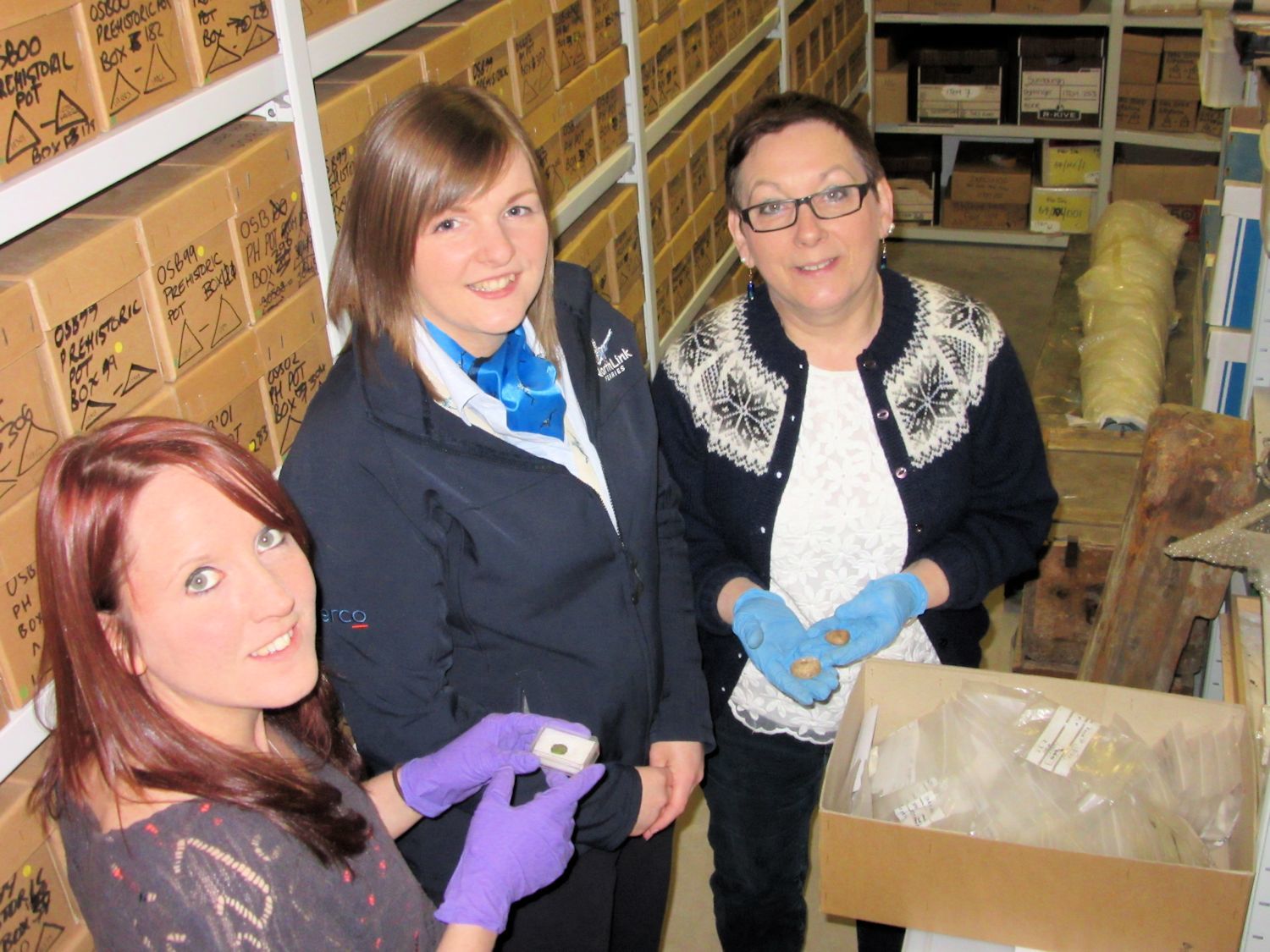More than 100,000 archaeological artefacts have been returned to Shetland as a part of a major new museum collection.
Funds from dig sites around the Dunrossness area, including West Voe and Old Scatness make up with the vast collection, which has had to be shipped back to the islands in nearly 2,000 boxes.
The artefacts will be included in the Recognised Archaeology Collection at Shetland Museum and Archives.
Curator of collections Jenny Murray and collections assistant Laurie Goodlad travelled to Bradford University to oversee the packaging of the goods for the long trip north.
Among the many items are artefacts returned from two middens on the West Voe site, including shards of the earliest pottery ever found in Shetland.
The clay pottery and other finds from this area are around 6,000 years old and are the earliest reported evidence of human civilisation in the isles.
Old Scatness excavations between 1995 and 2006 uncovered a diverse range of items including animal and fish bones, stone tools, painted pebbles, carved stones, pottery, coins, beads and even Roman glass.
Dating confirmed dates of between 400-200BC for this construction, with later Pictish buildings also found on the site.
This multi-period excavation is the most intensively studied site in Shetland, yielding 40,000 small finds and over 50,000 pieces of pottery.
The finds were all reported and then catalogued in the national treasure trove system, who ensure that significant objects are preserved.
The collection can now be brought home after Shetland Museum and Archives received recognised status for their work.
Musuem curator Ms Murray, said “We’re just delighted to have this material back in our care. Now that it’s all here, we can make it accessible for Shetland students, and those visiting, to use in research project and studies.
“We’ve got a big job to unpack it all and formally catalogue it into our collection, but then we’ll be working on a highlights display of some of the best bits for later in the year.”
The project has been supported by Serco NorthLink Ferries, who helped transport the material back to the islands.
Managing director Stuart Garrett said: “Shetland has some of the most fascinating and oldest archaeological finds in Europe.
“Supporting the team at Shetland Museum and Archives to bring these artefacts back to the isles is something that NorthLink Ferries was definitely keen to support.”
